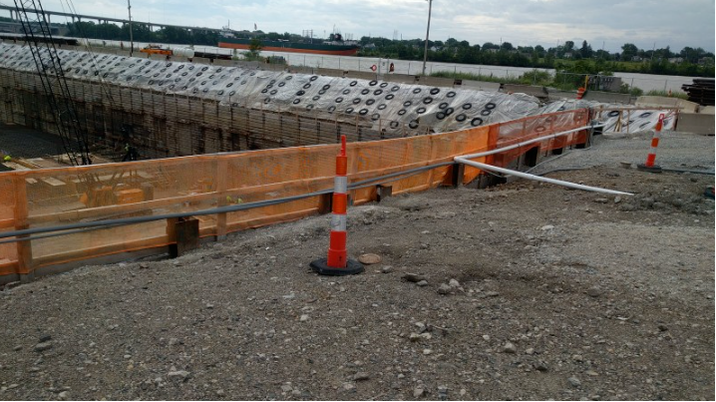Consulting Civil Engineering Companies Giving Geotechnical Solutions
Consulting Civil Engineering Companies Giving Geotechnical Solutions
Blog Article
How Consulting Engineers Enhance Geotechnical Engineering Projects: Insights Into Their Knowledge, Methodologies, and Collaborative Approaches
Consulting designers are essential in enhancing geotechnical design projects, using their specialized expertise to navigate the intricacies of subsurface problems. Their collective techniques foster interaction amongst diverse task stakeholders, ultimately forming the job's trajectory.
Function of Consulting Engineers
The proficiency of speaking with engineers in geotechnical engineering is basic to the effective execution of building and construction tasks. These experts play a crucial duty in evaluating dirt and rock homes, which are essential aspects influencing design and construction decisions. By performing detailed website investigations, consulting designers gather important information that educates the design process, ensuring tasks are developed on steady and ideal ground.
Consulting designers also offer invaluable insights right into risk management (geotechnical geologist). They identify possible geotechnical risks, such as landslides, dirt liquefaction, and settlement issues, making it possible for stakeholders to carry out efficient reduction strategies. Their expertise aids in maximizing structure styles, which can bring about significant cost savings and boosted safety and security
In addition, speaking with designers act as an important link in between task owners, engineers, and professionals. Their capability to equate intricate geotechnical information right into actionable recommendations promotes cooperation and promotes informed decision-making throughout the project lifecycle. This multidisciplinary method not only improves job efficiency however likewise ensures compliance with regulative requirements and finest practices.
Secret Techniques in Geotechnical Design

One main methodology is website investigation, which involves carrying out field examinations and laboratory analyses to gather information on subsurface problems. Methods such as Requirement Infiltration Screening (SPT) and Cone Penetration Testing (CPT) are widely used to review soil stratigraphy and toughness. In addition, geophysical techniques, consisting of seismic and electrical resistivity surveys, give non-invasive ways to evaluate subsurface features.
An additional vital approach is mathematical modeling, which allows engineers to simulate numerous scenarios and anticipate how soil-structure interactions will certainly act under different loading problems. Limited Aspect Analysis (FEA) is a typical technique used in this context.
In addition, the style of structures, preserving frameworks, and earthworks counts greatly on these approaches - geotechnical geologist. By integrating advanced analytical devices with area data, seeking advice from engineers can establish customized options that attend to certain project obstacles, inevitably contributing to the stability and safety and security of building jobs
Importance of Dirt Evaluation
Soil analysis acts as a foundational element in geotechnical design, offering essential insights right into the physical and chemical residential or commercial properties of dirt essential for efficient building and construction planning. Recognizing soil characteristics is essential blog for determining its load-bearing capacity, drain habits, and possibility for negotiation or instability. In-depth soil investigations, including sampling and laboratory screening, help determine criteria such as soil kind, moisture web content, density, and shear strength.
These analyses inform the selection of proper construction methods and products, ultimately affecting project safety and long life. As an example, cohesive dirts might need various structure designs contrasted to granular dirts, demanding tailored engineering services. Additionally, dirt evaluation aids in recognizing contaminants that can pose threats to human health or the environment, permitting the development of mitigation methods.
Integrating dirt analysis right into the beginning of visit this site project growth assists to reduce unforeseen difficulties, guaranteeing that engineers can expect and resolve prospective issues prior to they intensify. By establishing a comprehensive understanding of the site conditions, speaking with engineers can enhance layout effectiveness and lower expenses, thus boosting the general success of geotechnical design jobs.
Collective Approaches in Tasks
Successful geotechnical jobs commonly rest on joint methods that combine diverse expertise from various techniques. Efficient cooperation among consulting designers, geologists, environmental scientists, and building and construction experts is crucial for resolving complicated obstacles and optimizing task results. By leveraging the distinct abilities and knowledge of each employee, jobs can gain from a holistic understanding of the site problems, regulatory demands, and design constraints.
Routine interaction and interdisciplinary meetings assist in the sharing of insights and promote a society of team effort. These click to investigate collective initiatives allow the identification of prospective risks early in the project lifecycle, enabling prompt reduction strategies. Integrating responses from stakeholders, consisting of local communities and regulative firms, makes certain that all perspectives are considered, improving job approval and conformity.
Furthermore, the assimilation of innovative modern technologies, such as Geographic Details Systems (GIS) and Building Information Modeling (BIM), further enhances collaboration. These devices permit for the real-time sharing of data and visualization of geotechnical problems, advertising educated decision-making. Inevitably, a joint approach not only streamlines task implementation yet additionally lays the structure for ingenious options to complicated geotechnical engineering challenges.
Influence On Task End Results

Consulting engineers use innovative approaches such as threat assessment and anticipating modeling, which enhance the accuracy of task forecasts. Their capability to incorporate cutting-edge modern technologies, like geotechnical instrumentation and information analytics, better improves the style and building procedures. Because of this, tasks experience enhanced efficiency, reduced expenses, and decreased delays.
Additionally, cultivating efficient interaction and partnership amongst staff member enhances analytic capabilities. When difficulties emerge, a joined front allows for quick recognition of solutions, protecting against potential setbacks. Eventually, the collaborative initiatives of seeking advice from engineers add to better outcomes, ensuring that projects fulfill both regulatory requirements and customer assumptions.
Final Thought

Report this page